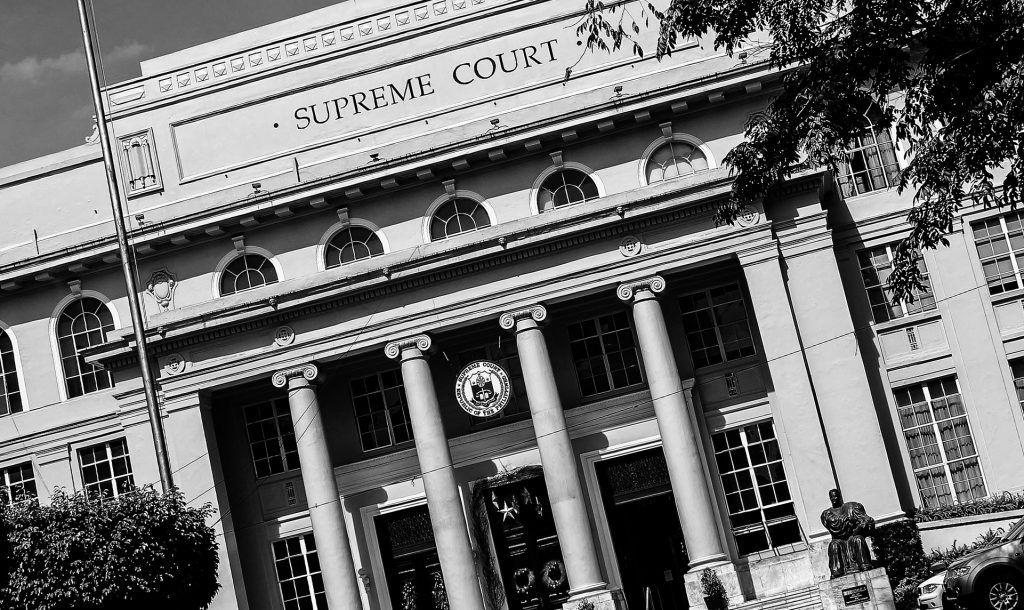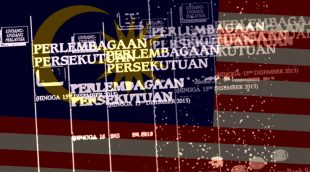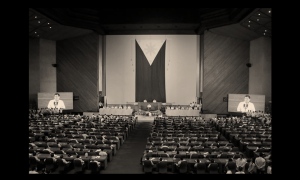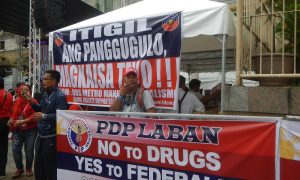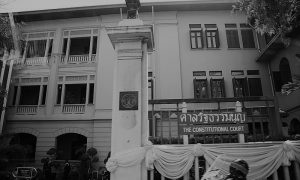Editor’s note: this article appears as part of a series on “Challenges to Charter Change: Critiques from Legal Experts”, co-edited by Nicole Curato and Bryan Dennis Gabito (Bo) Tiojanco. Read contributions from Bo, JP A. Villasor, and Björn Dresssel
A majority of Filipinos reject the shift to a federal system of government now. Only two out of ten agree that the 1987 Constitution should be revised at this time.
The Duterte Administration’s own economic managers warn that a shift to federalism can drain government finances. It could also spell disaster for some regions that are not prepared for the transition, and other economists say federalism is both expensive and unnecessary. These financial issues aside, the loudest criticism focuses on the fact that under the current draft constitution, President Rodrigo Duterte may run for two more terms.
There is no clear reason why a federal system of government is needed in the Philippines. And yet, students of Philippine law and history know there is a good chance this latest draft would be adopted. Procedures, and public sentiment, mean little in a country which has weak government institutions that can be misused to advance political agenda. The Philippines has the dubious distinction of having judicial review that can sanction irregular constitutional revisions.
The politics of constitutionalism
Filipino politicians invoke constitutionalism to rewrite the Constitution. They attempt to sidestep term limits and stay in power beyond constitutional limits by changing the form of government. They exploit weak institutions (Congress and the courts) to sustain and sanction their campaign.
In this approach, Congress opens the constitutional revision process (it calls for a constitutional convention or convenes as a constituent assembly), and courts approve their efforts and provide the final nail in the coffin. The court may perform its role of enabler regardless of how irregular the amendment process is. Politicians can use the system, invoking the people’s welfare, for personal gain.
Politicians take comfort in the idea that their efforts received judicial imprimatur. Marcos called his regime “constitutional authoritarianism”—it may be authoritarian, but it has the blessings of the judiciary; it is, therefore, legitimate.
Abuse of the constitutional revision system takes place in other parts of the world. Authoritarian regimes have veered away from using military coups or other unconstitutional practices. Would-be autocrats now have significant incentives to appear to be playing by the constitutional rules and are increasingly turning towards constitutional amendment and replacement as tools to help them construct a more authoritarian order. The formal rules embodied in constitutions are often stunningly weak, and even perceivably strong rules can be captured in a surprisingly high number of circumstances. For some “demagogues hemmed in by constitutional constraints, a crisis represents an opportunity to begin to dismantle the inconvenient and sometimes threatening checks and balances that come with democratic politics.”
The constitutional processes
The 1987 Philippine Constitution lays down the modes of its amendment or revision. Amendments, which introduce changes or additions involving a few specific and separable clauses of the Constitution, may be done through:
- The Congress, upon a vote of three-fourths of all its Members,
- A constitutional convention, or
- Initiative (which still awaits implementing legislation).
A revision, which alters the fundamental structure of the Constitution, may only be accomplished through the first two modes, not by Initiative.
The Constitution’s text is somewhat ambiguous about the convening of a constituent assembly. It is unclear whether the two-thirds vote required to convene Congress as a constituent assembly means the two chambers voting separately or as one. Even if the constituent assembly is properly convened, does the two thirds vote apply to every vote in the amendment process? There are over 200 members of the House of Representatives and only 24 senators. Voting jointly will allow the House to provide the two thirds vote necessary to convene as a constituent assembly and to proceed with amending the constitution without the Senate.
The reason for the ambiguity was that the constitutional commissioners wrote many parts of the document on the assumption that the form of government would be unicameral and parliamentary. In the end, by a single swing vote, the constitutional commission decided to adopt a presidential form of government that ensured the presidency of the heroine of the 1986 uprising.
The past is present
Ferdinand Marcos successfully developed the quickest way to change the Constitution. He created an entirely unconstitutional way of adopting a constitution (which involved children and the absence of ballots among other things), but in the end the Supreme Court washed its hands off the controversy by claiming that the adoption of the new Constitution was a political question.
Gloria Macapagal-Arroyo used the same formula to change the form of government to a parliamentary government, but lost in the Supreme Court by a single vote.
The Philippines is once more at the same crossroads. The president had just commissioned a draft Constitution from a handful of appointees. It seems Congress is preparing to convene itself into a constituent assembly for purposes of producing a final draft that will be subject to a plebiscite.
The constituent assembly is the preferred route because the president commands a sizeable majority at least in the House of Representatives. The House, except for a few members, has almost blindly followed every presidential whim. This is because the weak party system in the Philippines allows politicians to shift allegiances at the drop of a hat.
When Duterte was elected, the politicians’ response was not to assume its role as a check on executive power, but to join his party. In the House of Representatives, the Duterte alliance bloated to around 90% of the membership.
The Supreme Court has never decided against President Duterte.
To prevent a repeat of the Supreme Court’s submission to the Chief Executive, the framers of the 1987 Constitution strengthened the Supreme Court, giving it the power to review possible abuses of discretion by both the Executive or Legislative branches of government. The Court has been exercising this power, striking down numerous acts of the political branches of government. The Philippines settled into a system where judicial review can be used to check elected officials (elected by an untrustworthy electorate). As Raul Pangalangan notes, judicial review became a middle ground because courts are not dictatorial, sufficiently civilian, somewhat insulated from shifting political alliances, and draw authority from a democratic constitution.
But this does not mean that the Courts have uniformly exercised its checking function. There is also a general sense that the members of the Court defer regularly to the appointing power and are unable to disregard the immediate interests of the president. As a consequence, the Supreme Court faces serious criticism regularly. This is evident in national security issues, particularly under the Duterte Administration. The Senate refused to check the president’s power to impose martial law, and was upheld by the Court on every occasion. The Senate also barely lifted a finger to defend its power to try impeached officials when the Supreme Court decided to remove the Chief Justice. Little resistance is expected from both Congress and the Courts if the Administration decides to force the draft constitution on Filipinos.
The Duterte Administration also worked to neutralize other constitutional actors that display independence. The administration moved against all possible checks on the exercise of his powers and targeted the Chief Justice of the Supreme Court, the Chair of the Commission on Elections, the Ombudsman, and the vice-president for impeachment. Sereno was removed, not by impeachment (because there was no strong case against her), but by a petition for quo waranto, that nullified her appointment instead, ostensibly on her failure to file her statement of assets and liabilities.
The president also has another advantage. He will eventually have almost complete control of the Supreme Court. By the time his term ends in 2022, thirteen of the fifteen Justices of the Supreme Court would be his appointees.
The president’s control of the Court is important. The Supreme Court could rule that the House alone could convene into a constituent assembly and that the vote should be taken jointly (nullifying the need for the Senate’s participation). Like Marcos before him, Duterte would have succeeded in replacing a constitution with support from the judiciary.
The story of Malaysia through its constitution
Malaysia's Federal Constitution no longer embodies the spirit and intentions of the country's founders.
A rigged system?
Abusive constitutionalism remains an available route in the Philippines because the formal institutions that are supposed to enforce the constitutional order are weak. Unlike democracies with an established party system which implements checks and balances, Filipino politicians flock to the president after every election. Close personal ties with the president also make the Supreme Court a willing tool in constitutional change. Because checks and balances barely exist, the same system that is supposed to guard against abuses can be used for politicians’ personal gain.
Students of Philippine law are apprehensive that the Supreme Court, especially one that has never ruled against President Duterte, will reprise its role as the enabler of authoritarianism.
 Facebook
Facebook  Twitter
Twitter  Soundcloud
Soundcloud  Youtube
Youtube  Rss
Rss 